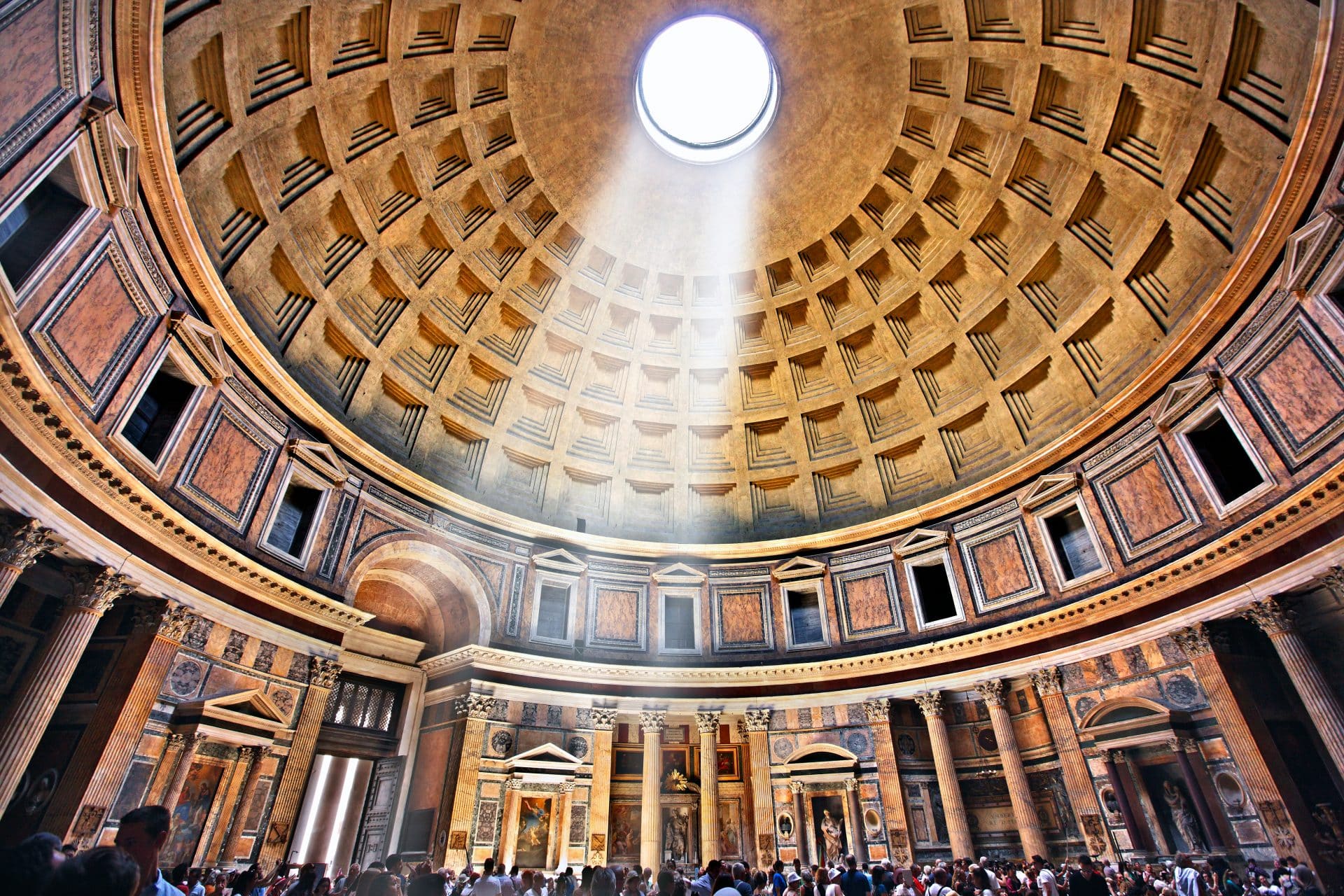Roman concrete, called opus caementicium, was used in the construction of countless monumental buildings throughout the Roman world.
Researchers have spent decades trying to solve the secret of the ultradurable building material, which has survived the elements for thousands of years, and in some cases, in extremely harsh conditions where our modern equivalent would crumble and crack after just a few decades.
It was previously thought that the key to Roman concrete’s durability was the introduction of pozzolanic ash, a natural siliceous or siliceous-aluminous material which reacts with calcium hydroxide in the presence of water at room temperature.
In this reaction, insoluble calcium silicate hydrate and calcium aluminate hydrate compounds are formed that possess cementitious properties. The ash was shipped all across the Roman Empire for construction, and was even described as a key ingredient for concrete in accounts by contemporary Roman architects and historians.
A closer examination of ancient samples shows white mineral features referred to as “lime clasts,” another key component in the concrete mix. “Ever since I first began working with ancient Roman concrete, I’ve always been fascinated by these features,” says MIT professor of civil and environmental engineering, Admir Masic. “These are not found in modern concrete formulations, so why are they present in these ancient materials?”
Using high-resolution multiscale imaging and chemical mapping techniques, the researchers have determined that the white inclusions were, indeed, made out of various forms of calcium carbonate.
A spectroscopic examination provided clues that these had been formed at extreme temperatures, as would be expected from the exothermic reaction produced by using quicklime instead of, or in addition to, the slaked lime in the mixture. Hot mixing, the team has now concluded, was actually the key to the super-durable nature.
“The benefits of hot mixing are twofold,” Masic says. “First, when the overall concrete is heated to high temperatures, it allows chemistries that are not possible if you only used slaked lime, producing high-temperature-associated compounds that would not otherwise form. Second, this increased temperature significantly reduces curing and setting times since all the reactions are accelerated, allowing for much faster construction.”
During the hot mixing process, the lime clasts develop a characteristically brittle nanoparticulate architecture, creating an easily fractured and reactive calcium source, which, as the team proposed, could provide a critical self-healing functionality.
As soon as tiny cracks start to form within the concrete, they can preferentially travel through the high-surface-area lime clasts. This material can then react with water, creating a calcium-saturated solution, which can recrystallize as calcium carbonate and quickly fill the crack, or react with pozzolanic materials to further strengthen the composite material. These reactions take place spontaneously and therefore automatically heal the cracks before they spread. Previous support for this hypothesis was found through the examination of other Roman concrete samples that exhibited calcite-filled cracks.
To prove that this was indeed the mechanism responsible for the durability of the Roman concrete, the team produced samples of hot-mixed concrete that incorporated both ancient and modern formulations, deliberately cracked them, and then ran water through the cracks. Sure enough: Within two weeks the cracks had completely healed and the water could no longer flow. An identical chunk of concrete made without quicklime never healed, and the water just kept flowing through the sample. As a result of these successful tests, the team is working to commercialize this modified cement material.
“It’s exciting to think about how these more durable concrete formulations could expand not only the service life of these materials, but also how it could improve the durability of 3D-printed concrete formulations,” says Masic.
Through the extended functional lifespan and the development of lighter-weight concrete forms, he hopes that these efforts could help reduce the environmental impact of cement production, which currently accounts for about 8 percent of global greenhouse gas emissions. Along with other new formulations, such as concrete that can actually absorb carbon dioxide from the air, another current research focus of the Masic lab, these improvements could help to reduce concrete’s global climate impact.
The research team included Janille Maragh at MIT, Paolo Sabatini at DMAT in Italy, Michel Di Tommaso at the Instituto Meccanica dei Materiali in Switzerland, and James Weaver at the Wyss Institute for Biologically Inspired Engineering at Harvard University. The work was carried out with the assistance of the Archeological Museum of Priverno in Italy.
Massachusetts Institute of Technology
https://doi.org/10.1007/s41982-022-00131-x
Header Image Credit : Shutterstock





